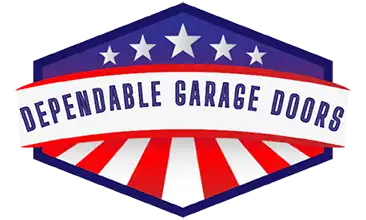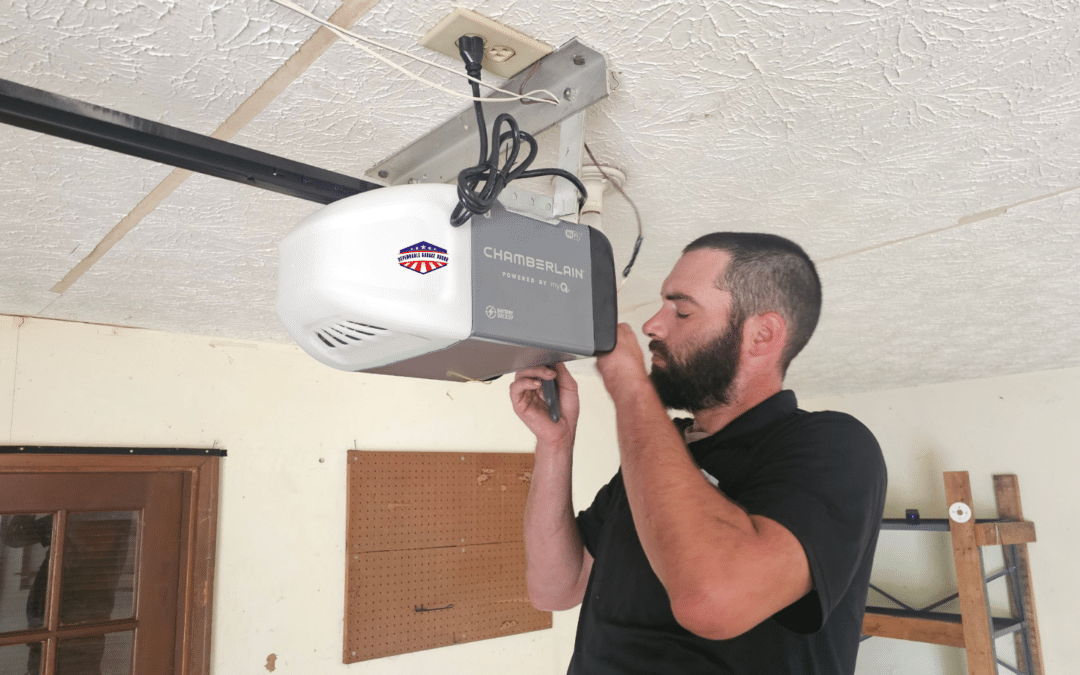Garage Door Troubles? Try These Quick Solutions
Our team knows how frustrating it can be when your garage door stops working unexpectedly.
Luckily, many common garage door problems have simple fixes you can handle yourself, saving you time, stress, and money. To help our neighbors here in Northern Georgia, we’ve put together this practical troubleshooting guide highlighting the most common garage door issues and what you can do to resolve them.
1. Check the Emergency Release Cord
If your automatic garage door opener isn’t responding, the first thing to try is pulling the emergency release cord (usually a red cord hanging down near the opener). This will disengage the opener and allow you to open the door manually.
If the door lifts easily, the issue is likely the automatic opener; if it doesn’t, you may have a more serious problem, such as a broken spring or cable.
2. Verify the Power Source
Garage door openers need power to operate. Check to make sure the motor unit is securely plugged into an outlet.
Additionally, inspect your home’s circuit breaker panel or GFCI outlet to ensure there hasn’t been a power interruption.
3. Replace Remote Batteries and Reprogram Remotes
Garage door opener remotes and keypads usually require fresh batteries every two years. If your remote or keypad has suddenly stopped responding, replace the batteries first.
After replacing them, you might need to reprogram the remote or keypad—refer to your garage door opener manual for clear instructions.
4. Clear Obstructions from the Door’s Path
Your garage door tracks and the area around the door can easily accumulate debris, leaves, dirt, or objects. These obstructions might prevent smooth operation.
Regularly clean your tracks and remove any visible obstructions or objects blocking the door’s path.
5. Inspect and Realign Photo-Eye Sensors
Safety sensors (located near the bottom of your garage door opening) prevent your door from closing if something crosses its path. Check these sensors for alignment and cleanliness if your garage door opens or closes partially before reversing.
Adjust them gently by hand, ensuring they’re directly facing each other.
6. Clean Dirty or Damaged Sensors
Dust, spider webs, or grime on sensor lenses can disrupt function. Clean the sensor lenses gently using a soft cloth, avoiding harsh chemicals.
Damaged sensors might require professional replacement if cleaning doesn’t resolve the issue.

7. Lubricate Garage Door Rollers and Hinges
Georgia’s varying climate can cause garage door parts to stiffen over time, especially in cooler months. Lubricate rollers, hinges, and tracks regularly using a silicone-based or lithium lubricant.
Proper lubrication reduces friction and noise and extends the life of your garage door components.
8. Inspect Rollers and Tracks for Damage
Worn or rusted rollers or bent tracks can cause your door to move unevenly, produce excessive noise, or fail to close entirely.
Carefully inspect rollers and tracks. If you notice visible damage, such as bent tracks or broken rollers, it’s best to call professionals like Dependable Garage Solutions for repairs.
9. Adjust Limit Switch Settings
The limit settings might need adjustment if your door stops too soon while opening or closing or reverses unexpectedly.
These settings control how far your door moves. Refer to your opener’s manual and adjust these switches in small increments, testing the door carefully afterward.
10. Adjust the Force Settings
If your door slams shut or struggles to close completely, your opener’s force settings may need adjustment. Locate the force adjustment screws on the motor unit and turn slightly (clockwise to increase force, counterclockwise to reduce).
Make small adjustments and test thoroughly to avoid safety hazards or damaging your door.
11. Ensure the Door Is Not Manually Locked
Many garage doors have manual locks—such as slide bolts or horizontal bars—that can accidentally engage.
If your opener runs but the door won’t move, check the inside of your garage door for manual locks and disengage them.
12. Inspect for Broken Springs and Cables (with Caution)
Broken garage door springs or cables pose serious risks and require professional repair. If you notice frayed cables, visible spring gaps, or if the door feels extremely heavy when manually opening, immediately call professionals like Dependable Garage Solutions.
Never attempt these repairs yourself—springs and cables are under extreme tension and dangerous without proper tools and training.
13. Verify the Disconnect Switch is Engaged Properly
If you hear the motor running, your emergency disconnect might be engaged, but the garage door doesn’t move.
Re-engage it by pulling the emergency cord, allowing the opener mechanism to click back into place. Then try operating your door again.
Bonus Tip: Seasonal Garage Door Maintenance for Georgia Weather
Georgia’s climate—hot summers, humid conditions, and chilly winters—can accelerate garage door wear. To avoid breakdowns, perform regular seasonal maintenance, including lubrication, inspection of weather seals, and cleaning debris.
Regular care keeps your garage door running smoothly year-round.
When to Call the Pros
While these tips cover many common issues, always prioritize safety. Problems involving springs, cables, electrical wiring, or significant alignment adjustments require specialized tools, training, and expertise.
Don’t hesitate to call professional technicians if you feel uncertain or unsafe.
At Dependable Garage Solutions, we’re proud to be your locally-owned, veteran-operated garage door experts serving Loganville, Monroe, Snellville, Johns Creek, Suwanee, Athens, Grayson, Winder, and all surrounding areas. Our experienced team is here to provide fast, reliable service when you need it most.
Give us a call or send us a message—your neighbors trust Dependable Garage Solutions, and so can you!




